Beef tenderloin is an extravagance, a costly cut that's distinctively lean and remarkably tender. Many cooks maximize its character by only cooking it to medium-rare, leaving it as juicy and tender as possible. Leftover tenderloin can be reheated in the same ways as any other piece of meat, but doing so without overcooking the delicate, lean flesh requires a bit of finesse.
Start With Storage
To ensure the best possible quality in your leftover beef, you must treat it with care from the beginning. Wrap the tenderloin in airtight packaging as soon as it cools to room temperature, and refrigerate it immediately. It's best if it's stored as a single piece of beef, rather than sliced. Unsaturated fats in the meat oxidize and generate unpleasant, cardboard-y flavors if they're exposed to the air. Leaving the beef intact, and making the packaging as airtight as possible, minimizes that damage. It's also best to use the leftover tenderloin as soon as possible, ideally the next day.
Reheating the Whole Piece
Gently reheating the whole tenderloin retains must of the cut's original juiciness, but you must use low heat to prevent the tender cut from becoming well done. One alternative is to insert a probe thermometer into the center of the leftover piece, then wrap it in foil with a tablespoon or two of the previous day's sauce or cooking juices for moisture. Reheat it gently in your oven at 225 degrees Fahrenheit until its internal temperature reaches at least 150 F, then remove and slice it. Alternatively, if the beef is tightly sealed in waterproof packaging, you can heat it slowly in a pot of simmering water. Warming times will vary depending on the size of your piece of beef.
Reheating Slices
Although reheating the whole piece of tenderloin creates an end result closer to the original texture, reheating the beef in slices is quicker. Wrap multiple portions in foil and reheat them in a slow oven, like the whole tenderloin, with a small amount of sauce. For one or two portions, it's quicker to reheat the slices on the stovetop. Pour some leftover sauce or gravy, or store-bought beef broth, into a small saucepan. Bring it to a simmer, and dunk a few slices at a time into the hot liquid. Transfer the warmed slices to a plate, and serve immediately.
Temperature and Food Safety
The U.S. Department of Agriculture's Food Safety and Inspection Service recommends any leftovers be reheated to a temperature of 165 F, to ensure the maximum degree of food safety. That's inconsistent with keeping your tenderloin juicy and moderately cooked, as is the initial recommended temperature of 145 F for beef. If the beef is more than a day old and you'd rather err on the side of caution, you can use any of these methods and simply warm the beef to that higher temperature. Alternatively, you could use the leftover tenderloin -- together with any leftover vegetables and gravy -- to make a superior stew, meat pie, casserole or other full-heated dish.
Related Articles
Can You Marinate & Refreeze Beef?
How Long Can You Marinate Meat Before ...

How to Convection Roast a Brisket

How to Cook a Rolled Beef Chuck Roast ...

How to Boil Beef
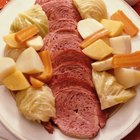
Instructions for Cutting Corned Beef

Can You Cook Beef Stroganoff Ahead of ...
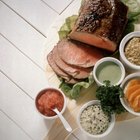
How to Cook 5 Lbs. of Beef Tenderloin

How to Freeze Pot Roasts
How to Slow Cook a Pot Roast With Beef ...
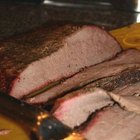
How to Cook Beef Brisket Slices for a ...
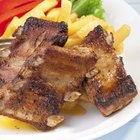
How to Reheat Beef Ribs

Can Chuck Roast Be Used for Stew?

How to Cook Bison Burger

How to Salt Cure Jerky

How to Can Beef Meat With a Pressure ...
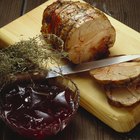
How to Cook a Center Cut Pork Loin in a ...
How to Cook Sirloin Filets in a Pan and ...

How to Make Jalapeno Beef Jerky
Why Does My Pork Roast Come Out Dry?
References
- On Food and Cooking: The Science and Lore of the Kitchen; Harold McGee
- Professional Cooking; Wayne Gisslen
Writer Bio
Fred Decker is a trained chef and prolific freelance writer. In previous careers, he sold insurance and mutual funds, and was a longtime retailer. He was educated at Memorial University of Newfoundland and the Northern Alberta Institute of Technology. His articles have appeared on numerous home and garden sites including GoneOutdoors, TheNest and eHow.